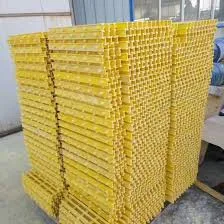
-
 Afrikaans
Afrikaans -
 Albanian
Albanian -
 Amharic
Amharic -
 Arabic
Arabic -
 Armenian
Armenian -
 Azerbaijani
Azerbaijani -
 Basque
Basque -
 Belarusian
Belarusian -
 Bengali
Bengali -
 Bosnian
Bosnian -
 Bulgarian
Bulgarian -
 Catalan
Catalan -
 Cebuano
Cebuano -
 China
China -
 China (Taiwan)
China (Taiwan) -
 Corsican
Corsican -
 Croatian
Croatian -
 Czech
Czech -
 Danish
Danish -
 Dutch
Dutch -
 English
English -
 Esperanto
Esperanto -
 Estonian
Estonian -
 Finnish
Finnish -
 French
French -
 Frisian
Frisian -
 Galician
Galician -
 Georgian
Georgian -
 German
German -
 Greek
Greek -
 Gujarati
Gujarati -
 Haitian Creole
Haitian Creole -
 hausa
hausa -
 hawaiian
hawaiian -
 Hebrew
Hebrew -
 Hindi
Hindi -
 Miao
Miao -
 Hungarian
Hungarian -
 Icelandic
Icelandic -
 igbo
igbo -
 Indonesian
Indonesian -
 irish
irish -
 Italian
Italian -
 Japanese
Japanese -
 Javanese
Javanese -
 Kannada
Kannada -
 kazakh
kazakh -
 Khmer
Khmer -
 Rwandese
Rwandese -
 Korean
Korean -
 Kurdish
Kurdish -
 Kyrgyz
Kyrgyz -
 Lao
Lao -
 Latin
Latin -
 Latvian
Latvian -
 Lithuanian
Lithuanian -
 Luxembourgish
Luxembourgish -
 Macedonian
Macedonian -
 Malgashi
Malgashi -
 Malay
Malay -
 Malayalam
Malayalam -
 Maltese
Maltese -
 Maori
Maori -
 Marathi
Marathi -
 Mongolian
Mongolian -
 Myanmar
Myanmar -
 Nepali
Nepali -
 Norwegian
Norwegian -
 Norwegian
Norwegian -
 Occitan
Occitan -
 Pashto
Pashto -
 Persian
Persian -
 Polish
Polish -
 Portuguese
Portuguese -
 Punjabi
Punjabi -
 Romanian
Romanian -
 Russian
Russian -
 Samoan
Samoan -
 Scottish Gaelic
Scottish Gaelic -
 Serbian
Serbian -
 Sesotho
Sesotho -
 Shona
Shona -
 Sindhi
Sindhi -
 Sinhala
Sinhala -
 Slovak
Slovak -
 Slovenian
Slovenian -
 Somali
Somali -
 Spanish
Spanish -
 Sundanese
Sundanese -
 Swahili
Swahili -
 Swedish
Swedish -
 Tagalog
Tagalog -
 Tajik
Tajik -
 Tamil
Tamil -
 Tatar
Tatar -
 Telugu
Telugu -
 Thai
Thai -
 Turkish
Turkish -
 Turkmen
Turkmen -
 Ukrainian
Ukrainian -
 Urdu
Urdu -
 Uighur
Uighur -
 Uzbek
Uzbek -
 Vietnamese
Vietnamese -
 Welsh
Welsh -
 Bantu
Bantu -
 Yiddish
Yiddish -
 Yoruba
Yoruba -
 Zulu
Zulu
frp chemical storage tanks
Understanding FRP Chemical Storage Tanks
Fiberglass Reinforced Plastic (FRP) chemical storage tanks have become increasingly popular in various industrial applications due to their exceptional durability, corrosion resistance, and lightweight properties. These tanks are particularly well-suited for storing chemicals, including acids, bases, and other corrosive substances, making them an invaluable asset in industries such as pharmaceuticals, petrochemicals, and wastewater treatment.
Understanding FRP Chemical Storage Tanks
The manufacturing process of FRP tanks involves layering fiberglass roving with a resin matrix, which is then cured to create a robust composite material. This construction allows for custom designs and sizes, enabling industries to optimize space and meet specific storage requirements. Additionally, FRP tanks can be molded into various shapes, providing flexibility in installation and setup within facilities.
frp chemical storage tanks

Another notable benefit of FRP chemical storage tanks is their lightweight nature. Compared to metal tanks, FRP tanks are considerably lighter, facilitating easier transportation and installation. This portability can be particularly advantageous in remote locations or for temporary storage solutions.
Moreover, FRP tanks are not only designed for chemical storage but can also be equipped with advanced features such as monitoring systems that provide real-time data on tank levels, pressure, and temperature. These enhancements allow for better inventory management and improved safety measures, as operators can quickly respond to any irregularities.
In terms of environmental impact, FRP tanks offer a more sustainable option as they can be designed to minimize emissions and reduce the likelihood of environmental contamination through their leak-proof construction. This feature aligns well with increasing regulatory pressures for businesses to operate in an environmentally responsible manner.
In conclusion, FRP chemical storage tanks represent a modern solution for industrial storage needs, combining durability, safety, and versatility. As industries continue to evolve and face new challenges, the adoption of FRP technology will likely keep growing, reinforcing its position as a preferred choice for safe and efficient chemical storage. As businesses prioritize sustainability and safety, investing in FRP tanks can lead to significant long-term benefits.









